Cargando...
Recursos educativos
-
Nivel educativo
-
Competencias
-
Tipología
-
Idioma
-
Tipo de medio
-
Tipo de actividad
-
Destinatarios
-
Tipo de audiencia
-
Creador
Lo más buscado
- Letras K
- Ejercicios escolares para niños de 5 años
- El método científico
- actividades educativos
- Descargar ejercicios de lengua
- matemáticas para niños
- Accidentes de tráfico
- Actividades de geometría
- Actividades ortografia imprimir
- Actividades con números naturales para secundaria
- Juegos de tangram de figuras
- Huesos del cuerpo humano
- Alimentos transgénicos
- Regiones de Italia
- Tripticos de experimentos
-
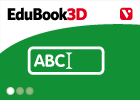
Complete. Continental vegetation
EduBook Organización
- 2152 visitas
Complete the text about continental vegetation with the correct words: mountain forests higher lower grasses extreme shrubs pines Continental vegetation is adapted to weather conditions. We can find…
-
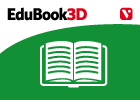
The Metal Age
EduBook Organización
- 2140 visitas
Copper, bronze and iron At the end of Prehistory, people started to use metals to make things. We call this period of Prehistory the Metal Age. People started using the first metals in about 3000 BC.…
-
Initial evaluation 01 - Ancient History
EduBook Organización
- 2147 visitas
Decide if these statements about Roman times are correct: The Romans were a people from Italy. ➝ The Iberian Peninsula was uninhabited when the Romans arrived. ➝ On the Iberian Peninsula people did…
-

Describe. Social groups
EduBook Organización
- 2140 visitas
Look at the pictures: What are the people doing? What are they wearing?
-

Look. A Medieval city
EduBook Organización
- 2156 visitas
Look at the picture of a Medieval city and answer the questions: What were the streets in the city like? What were the houses made from? What are the people in the main square doing? Where is the church…
-

Answer. Plants
EduBook Organización
- 2144 visitas
Look at the photos: Describe the plants you can see. Can you name any of them? What differences and similarities can you see between the plants? How are plants different to animals? Why are plants so…
-

Initial evaluation 04 - Animal reproduction
EduBook Organización
- 2138 visitas
Complete the sentences with the correct words: In most animals there is a male and a . Animals which are born from a mother are called . Animals which are hatched from an egg are called . To become…
-
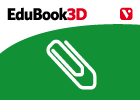
Snails: hermaphrodite animals
EduBook Organización
- 2144 visitas
Each individual snail is both male and female. During sexual union, the snails face each other and join together at the feet. Each snail deposits sperm in the female reproductive system of the other…
-

End-of-unit activities - Plant reproduction
EduBook Organización
- 2160 visitas
In this unit we are going to learn about how flowering and non-flowering plants reproduce. The reproductive organs of most plants are in the flowers. It is in this part of the plant that the two…
-
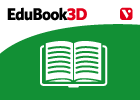
Energy and forces
EduBook Organización
- 2145 visitas
Energy produces changes Energy produces changes when it acts on objects. For example: Heat energy changes the state of objects. Ice cream will melt at room temperature. Electrical energy generated by…
Te estamos redirigiendo a la ficha del libro...













